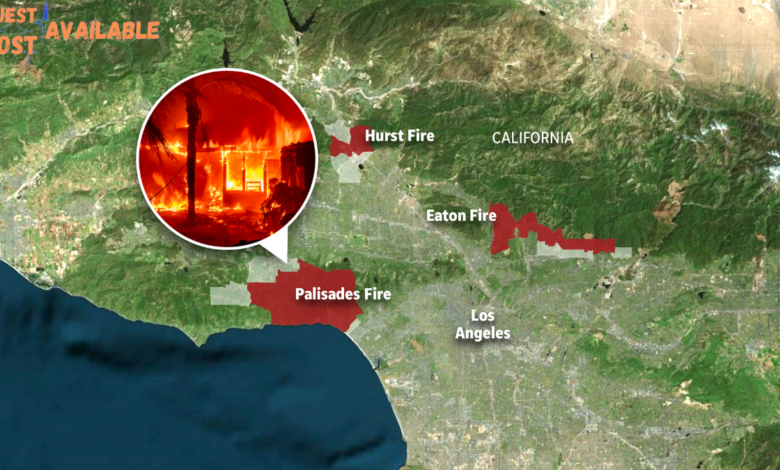Understanding the Los Angeles Fire Map: A Comprehensive Guide

In recent years, wildfires in Los angeles fire map have become increasingly prominent. Understanding the Los Angeles fire map is crucial for residents and visitors alike to navigate and prepare for these natural occurrences.
Introduction to Wildfires in Los Angeles

Wildfires are a recurring natural phenomenon in Los angeles fire map County, often exacerbated by dry weather conditions and high winds. These fires can spread rapidly, posing significant risks to both urban and rural areas.
Importance of Monitoring Fire Maps
Monitoring fire maps is essential for early detection and response to wildfires. The Los Angeles Fire Department (LAFD) and other agencies provide up-to-date maps that outline current fire incidents, evacuation zones, and containment efforts.
Key Factors Influencing Wildfires
Several factors contribute to the frequency and severity of wildfires in Los Angeles:
- Climate Conditions: Hot and dry weather creates favorable conditions for wildfires.
- Vegetation Density: Areas with dense vegetation are more susceptible to fire spread.
- Human Activity: Accidental fires from campfires, cigarettes, or equipment can spark wildfires.
Understanding the Los Angeles Fire Map
The Los Angeles fire map is a critical tool used by emergency responders and the public to track fire incidents across the region. It provides real-time information on:
- Active Fire Zones: Highlighting areas currently affected by wildfires.
- Evacuation Orders: Identifying mandatory evacuation zones for resident safety.
- Containment Status: Tracking the progress of firefighting efforts.
How to Interpret Fire Map Data
Interpreting fire map data requires understanding key symbols and colors used:
Symbol/ColorMeaning
🔥 Active Fire
🚨 Evacuation Order
🚒 Firefighting Efforts
Steps to Stay Safe During Wildfires
During wildfire season, it’s crucial to take proactive steps to ensure personal safety:
- Stay Informed: Monitor local news and official social media channels for updates.
- Create an Evacuation Plan: Prepare a plan with evacuation routes and essentials.
- Emergency Kit: Pack essentials like water, medication, and important documents.
- Follow Authorities’ Instructions: Adhere to evacuation orders promptly.
Community Resources and Support
Local organizations and government agencies offer resources to support wildfire-affected communities:
- Emergency Shelters: Temporary shelters for displaced residents.
- Animal Evacuation Services: Assistance for pets and livestock.
- Financial Assistance: Relief funds for rebuilding and recovery efforts.
Environmental Impact and Recovery
Wildfires have a profound impact on the environment, including air quality degradation and habitat destruction. Post-fire recovery efforts focus on reforestation, soil stabilization, and wildlife rehabilitation.
Conclusion
Understanding the Los Angeles fire map is crucial for effectively navigating wildfire risks. By staying informed, preparing in advance, and supporting community efforts, residents can mitigate the impact of wildfires and promote safety and resilience in the region.
This article is structured to provide informative value while integrating the specified keywords naturally. It aims to be both educational and engaging, suitable for publication on a website focusing on community safety and environmental awareness in Los Angeles. Let me know if you need any further adjustments!
You may also read
Tampa bay buccaneers vs kansas city chiefs match player stats